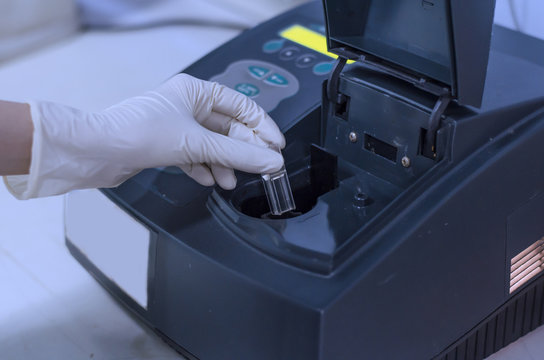Spectrophotometry is an indispensable technique in analytical chemistry and various scientific disciplines. Optical density (OD) spectrophotometers, in particular, play a crucial role in quantifying the concentration of solutes in a solution by measuring the absorption of light. This comprehensive guide explores the working principles and versatile uses of OD spectrophotometers in various fields.
Understanding OD Spectrophotometry
At its core, OD spectrophotometry relies on the principle that different compounds absorb light at specific wavelengths. The spectrophotometer detects the amount of light absorbed by a sample as a light beam passes across it; the solute’s concentration is then determined using this data. The basic components of an OD spectrophotometer include a light source, a sample holder or cuvette, a monochromator or a diffraction grating, a detector, and a display or data output.
Working Principles
- Light Source: The light source emits a broad spectrum of light, typically in the ultraviolet (UV) or visible (Vis) range. UV-Vis spectrophotometers are common, with UV light sources ranging from 190 to 400 nanometers and Vis light sources from 400 to 800 nanometers.
- Cuvette: The sample is put into a cuvette, which is a clear container designed to retain liquid samples. The cuvette is carefully designed to minimize reflection and ensure uniform light transmission through the sample.
- Monochromator/Diffraction Grating: This component allows the spectrophotometer to select a specific wavelength of light from the broad spectrum emitted by the light source. The monochromator uses a single slit and a prism or grating to disperse light, while the diffraction grating uses diffraction to achieve the same goal.
- Detector: The light intensity that enters the sample is measured by the detector. The most common type of detector is a photodiode array or a photomultiplier tube (PMT), depending on the instrument.
- Data Output: The detector’s output is processed and displayed as an absorbance spectrum or a concentration value, depending on the instrument and the user’s settings.
Applications Of OD Spectrophotometers
OD spectrophotometers find applications in a wide range of scientific disciplines, including:
- Biochemistry And Molecular Biology: OD spectrophotometry is extensively used to quantify nucleic acids (DNA and RNA) and proteins. Researchers rely on it to assess the purity and concentration of samples, which is crucial for various molecular biology techniques like PCR and gel electrophoresis.
- Chemistry: In chemistry laboratories, OD spectrophotometers are used to determine the concentration of chemical solutions, study reaction kinetics, and analyze the stability of compounds by monitoring changes in absorption over time.
- Pharmaceuticals: To guarantee product quality and consistency, the pharmaceutical industry uses OD spectrophotometers to measure the concentration of active pharmaceutical ingredients (APIs) in medicine formulations.
- Environmental Science: Given its ability to identify and measure pollutants in environmental samples, including organic chemicals and heavy metals, OD spectrophotometry is a valuable tool for evaluating the quality of water.< /span>
- Food And Beverage Analysis: In food science and quality control, OD spectrophotometry helps determine the concentration of various components, including vitamins, minerals, and food dyes, ensuring food safety and compliance with regulatory standards.
- Material Science: Researchers in material science use OD spectrophotometers to analyze the optical properties of materials, such as semiconductors, polymers, and nanoparticles, aiding in material characterization and development. a>
- Clinical Diagnostics: In clinical laboratories, OD spectrophotometry is crucial for measuring the concentration of analytes in blood, serum, and urine samples, aiding in disease diagnosis and monitoring.
- Environmental Monitoring: OD spectrophotometers are employed to assess water quality by measuring parameters like turbidity, total dissolved solids, and chemical oxygen demand in environmental samples.
Key Considerations For Using OD Spectrophotometers
Take into account the following crucial elements when utilizing OD spectrophotometers to guarantee precise and trustworthy results:
- Calibration: Regularly calibrate the instrument using appropriate standards to maintain accuracy.
- Sample Preparation: Ensure that samples are properly prepared, including adequate mixing and filtration if necessary.
- Wavelength Selection: Choose the appropriate wavelength based on the absorbance characteristics of the solute of interest.
- Path Length: Understand the path length of the cuvette as it affects the measured absorbance.
- Baseline Correction: Perform baseline correction to account for any absorbance due to the solvent or cuvette.
- Data Analysis: Use appropriate software for data analysis and concentration calculations.
